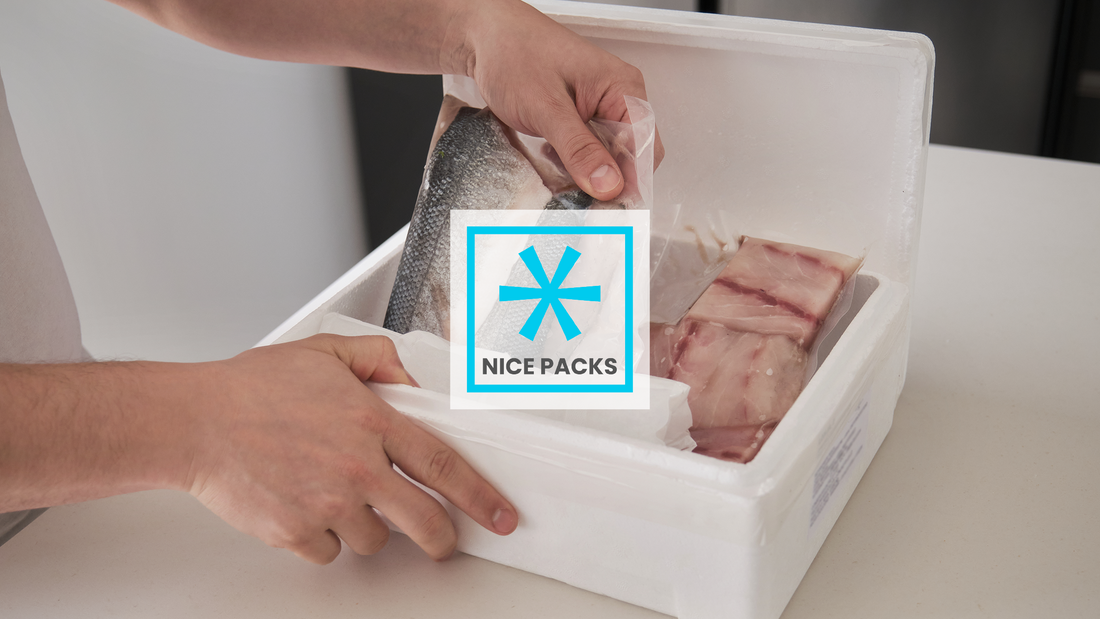When it comes to transporting food, using ice packs is a popular and effective method to keep perishable items cool and fresh. However, not all ice packs are the same, and their effectiveness can vary depending on the type and quality.
In this blog post, we'll explore the different types of ice packs available, how long they typically last, and how to choose the right one for food transportation.
Types of Ice Packs and Their Lifespan

Ice packs come in various types that are suitable for transporting food. Here are some of the commonly used ice packs and their lifespan:
1) Gel Ice Packs
Gel packs are popular types of reusable ice packs that consist of a gel substance. These packs come in different sizes and shapes, including small packs for smaller food containers and larger packs for bigger food containers.
The lifespan of a gel ice pack typically lasts between 2 to 3 hours, depending on the size and surrounding temperature. Larger gel ice packs may last longer than smaller ones due to the amount of gel inside them.
2) Instant Cold Packs
An instant cold pack is a type of ice pack that is commonly used to treat injuries and medical conditions such as sprains, strains, and bruises. They can also be used for transporting food. They're made of a chemical mixture that creates a cold sensation when activated. To activate them, you need to squeeze the pack to break the inner pouch that contains the chemicals. Once the chemicals mix together, the pack instantly becomes cold.
The lifespan of an instant cold pack typically lasts for about 30 minutes to an hour, depending on the size and surrounding temperature. They're not as long-lasting as other types of ice packs, but they can be a good temporary solution for keeping food cool during transportation.
3) Homemade Ice Packs
Homemade ice packs are a convenient and cost-effective alternative to commercially available ice packs. They can be made using a variety of materials that are commonly found at home, including frozen vegetables, ice cubes in a plastic bag, and wet towels.
The lifespan of homemade ice packs depends on the size and temperature of the materials used. Typically, frozen vegetables or ice cubes may last for 20-30 minutes before they start to thaw and lose their cooling effect. A wet towel can last for up to an hour, depending on the surrounding temperature and how well-insulated the container is.
4) Dry Ice Packs
Dry ice packs are unique and flexible ice packs that are often used for keeping frozen food and drinks cold in a cooler or lunch box. They're activated by soaking them in water and then freezing them. Once frozen, they can last 3-4 times longer than other types of ice packs.
Although dry ice packs are commonly used for household purposes with insulated lunch bags, they also work well for commercial food transportation. They are particularly useful for transporting perishable foods over long distances or in warm weather conditions. What sets them apart from other ice packs is that they remain dry even after they melt. This means that there is no mess or soggy packaging to deal with.
Factors That Affect the Lifespan of Ice Packs

Credit: Nice Packs
The lifespan of ice packs can vary depending on several factors:
1) Insulation
The quality of insulation used to keep the ice pack and food cool can affect the lifespan of the ice pack. Poor insulation can lead to heat transfer and cause the ice pack to melt faster, reducing its lifespan.
2) Temperature
The temperature of the environment in which the ice pack is used can also affect its lifespan. For example, ice packs may not last as long in a hot environment as they would in a cooler environment.
3) Frequency of Opening the Container
The more frequently the container or cooler is opened, the faster the ice pack will melt. Therefore, minimizing the frequency of opening the container can help extend the lifespan of the ice pack.
4) Size of the Ice Pack
Size and shape are crucial factors that determine the lifespan of an ice pack. Larger ice packs generally have a greater cooling capacity than smaller ones, and as such, they tend to last longer.
5) Shape of the Ice Pack
Lastly, the shape of an ice pack also plays a role in its effectiveness, with more uniform shapes providing more even cooling and longer lifespans. On the other hand, oddly shaped ice packs may not provide consistent cooling.
Which Ice Pack Should You Choose for Food Transportation?
Credit: Nice Packs
Dry ice packs are an excellent option for keeping food cold during transportation. Unlike other ice packs, these ice packs are designed to stay colder for longer, making them a great choice if you need to transport food over a long distance or in warmer conditions.
Another benefit of using dry ice packs is that they remain dry as they melt. This means no risk of liquids touching your food, which is crucial for items like bread or pastries that need to stay dry. With these ice packs, you can be confident that your food will reach its destination just as fresh as when you packed it.
FAQs
Can I reuse gel ice packs?
Yes, gel ice packs are reusable. After use, simply refreeze them according to the manufacturer's instructions for future use.
Can I use ice packs to keep food warm?
Ice packs are specifically designed to keep food cold. To keep food warm during transportation, consider using insulated containers or thermal bags designed for this purpose.
How should I clean and store ice packs between uses?
After each use, clean the ice pack with mild soap and water, then dry it thoroughly before refreezing or storing. Store ice packs in a clean, dry place away from direct sunlight or heat sources to prolong their lifespan.
Summary
Transporting food safely is essential, and ice packs are a convenient and effective solution. While there are various types of ice packs available, dry ice packs stand out as a superior option. These packs are flexible, easy to use, and last longer than other types of ice packs.
If you are looking for a reliable and long-lasting ice pack, consider Nice Packs dry ice packs. With their unique freezing process and durable design, Nice Packs can keep your food cold for longer and ensure safe transportation. Shop with us today.



